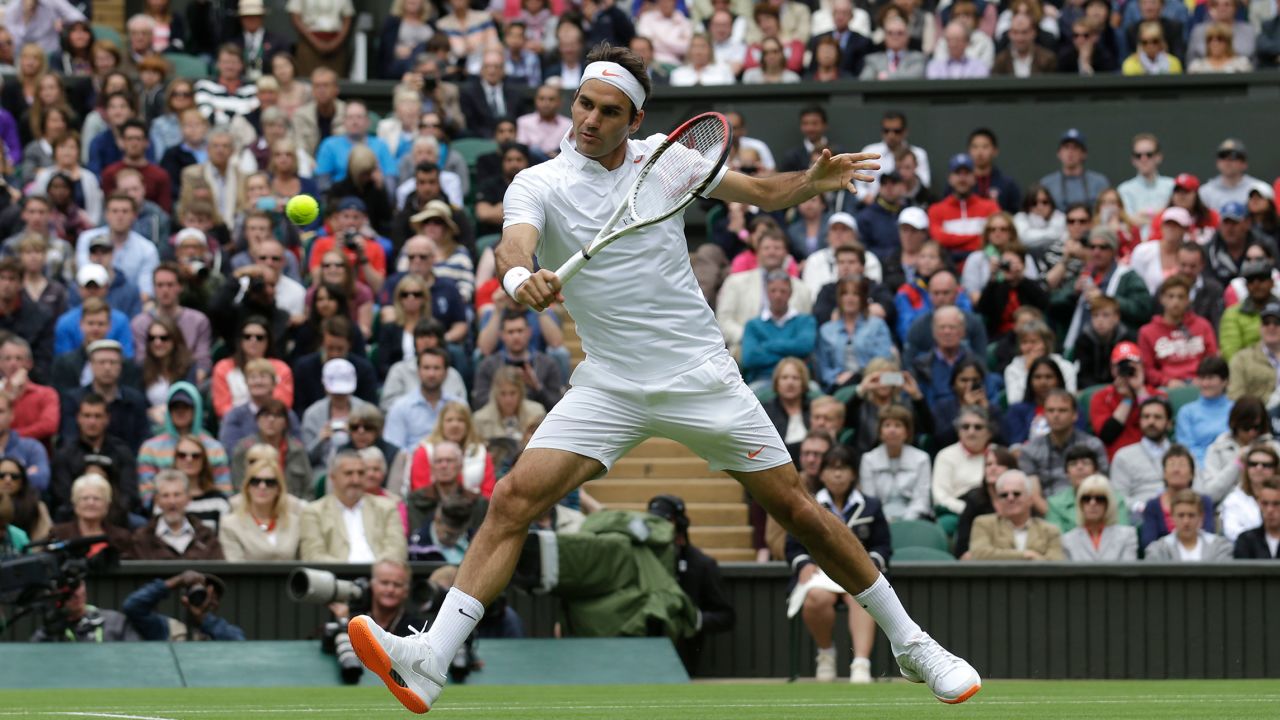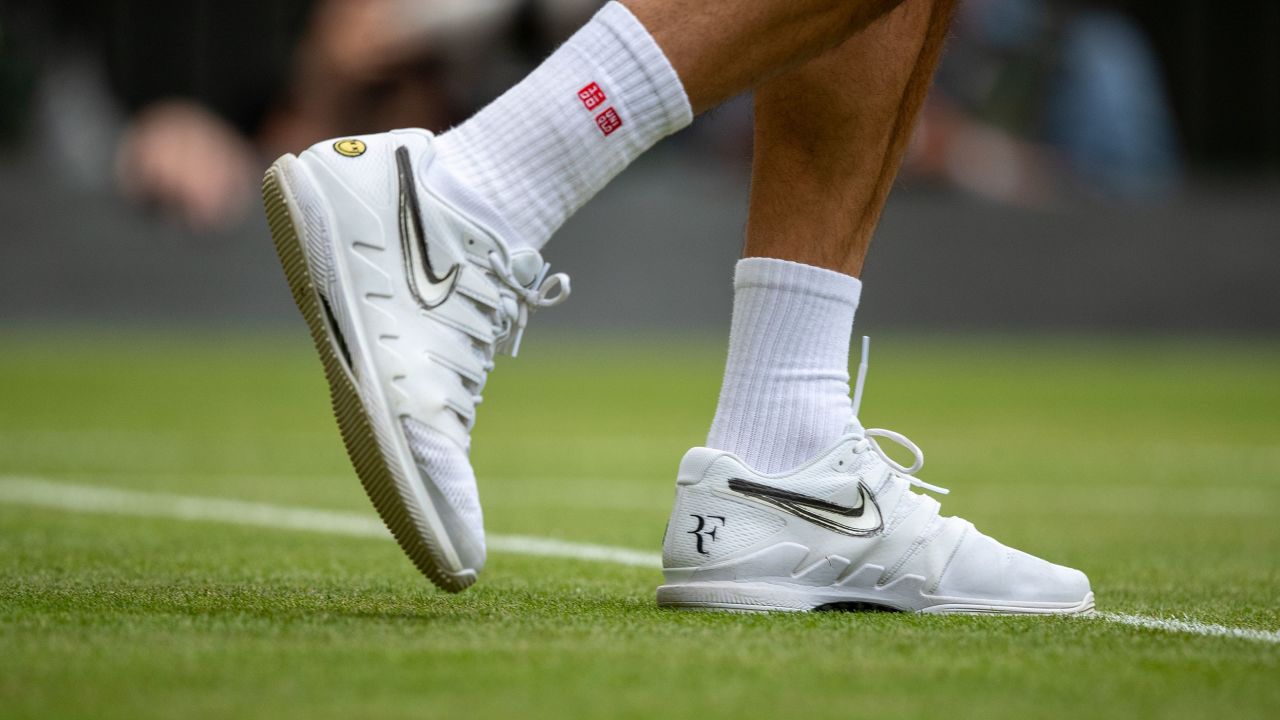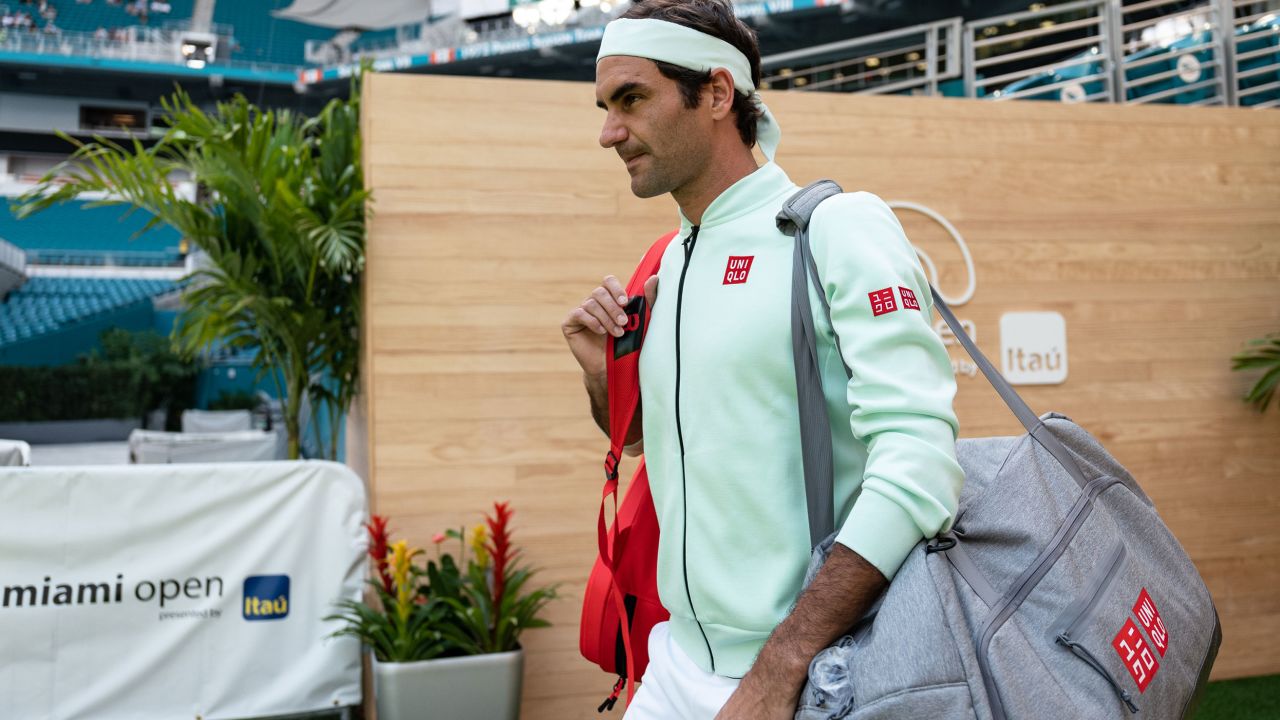[ad_1]
CNN
—
When Roger Federer made the decision to hang up his tennis racket last year at the age of 41, he did so as one of the most influential figures to have played the game.
Federer was dominant on the court, winning 20 grand slam singles titles between 2003 and 2018 and spending a total of 310 weeks at the top of the men’s rankings during the course of his career.
Away from the court, the Swiss star proved eminently marketable, acquiring a lucrative sponsorship portfolio that made him one of the highest-paid athletes in the world. Even last year, when he didn’t play a single ATP Tour event, he was estimated by Forbes to have made pre-tax gross earnings of $90.7 million.
Federer’s marketability, specifically his long-standing sponsorship deal with sportswear giant Nike, is one aspect of the tennis star’s life and career explored in a new book, “The Roger Federer Effect.”
“Writing the book, we realized how enormous the impact Federer had, not just inside tennis, but outside it, too,” Simon Cambers, the book’s co-author, told CNN Sport’s Amanda Davies last month.
In the below extract from “The Roger Federer Effect,” Mike Nakajima, the former tennis director at Nike, explains what made Federer and Nike such a perfect match, saying that Nike could have done for Federer what it did for Michael Jordan.

The prominent stakeholders in world tennis always rent houses near The All England Club during Wimbledon to hold meetings and welcome their athletes.
“There, athletes have a safe haven,” said Mike Nakajima, tennis director at Nike for 29 years. “They can come and hang around and nobody asks for pictures.”
Roger Federer felt very comfortable in the Nike house when he was young, happy to pop over, make himself a sandwich with ham and cheese and watch Wimbledon on TV. In 2016, as chance would have it, the Nike people on Arthur Road, on the other side of Wimbledon Park from The All England Club, were practically neighbors of the Federers.
“We had an indoor pool and we also had a tennis court in the back. It was a really bad one,” said Nakajima. “We ended up resurfacing the court because we wanted to stay at that house, we put the Nike swoosh on, and everything was pretty cool.”
The Nike house became the Federers’ second home during the Championships. Mirka (Federer’s wife) and one of the nannies went swimming with the kids and Roger played tennis with them.
“From my bedroom, I could see the tennis court,” said Nakajima. “So I saw Roger feeding balls to his kids. It was almost embarrassing to see Roger Federer, the greatest player, playing tennis on one of the worst tennis courts. Later, he told me one of the boys said: ‘Dad, can you get off the court so my brother and I can play?’ He was on the side and his little boys were playing together. I asked him: ‘Hey, Rog, when was the last time you got kicked off a court?’ He just smiled. He must be fun to be around for his kids.”
Nakajima worked with many stars at Nike, from John McEnroe, Pete Sampras, Andre Agassi, Serena Williams and Maria Sharapova to Federer and Rafael Nadal. He even accompanied Williams as a shopping assistant (not his field of expertise). He first met Federer when Nike signed him as a 13-year-old.
“He was up-and-coming, one of the top juniors. We brought him on and I realized right off the bat that he’s naturally charismatic and speaks well. And I noticed that he knew he was going to be great.”
Federer’s success story also became a stroke of luck for Nike. After Sampras and Agassi, Federer turned out to be the next superstar of tennis. When Andy Roddick, under contract to competitor Reebok, won the US Open in 2003, Nakajima expected it might be the start of the next US wave in tennis. “But it didn’t happen. Europe became the hotbed of tennis, and Roger was the start of it.”
Nike set out to popularize Federer in the US. “I’m a little biased,” said Nakajima. “But no one does marketing better than Nike. When you get the big Nike marketing machine behind you, that can blow that athlete through the stratosphere.
“Roger would have been famous on his own for sure. Even if he was playing for any other brand. But he became a lot bigger because of Nike’s marketing machine. The exposure that Nike can provide to an athlete is amazing. Obviously, you have to have success on the court, which Roger had. He won a few US Opens; that opened many people’s eyes.”
The partnership with Nike soon expanded into new territories. “Roger got into fashion, meeting Anna Wintour of Vogue, doing photoshoots for GQ,” said Nakajima. Federer made Wimbledon, the holy grail of tennis, his catwalk. He walked there in an old-school cardigan, a white blazer or long white trousers. He also carried matching accessories.
In 2006, he wore a logo on the left breast pocket of his jacket with his last name; the following year, he wore his initials for the first time: RF. Federer was a pioneer in this respect. Later, Rafael Nadal, Novak Djokovic and Andy Murray also had their logos created.

Nakajima said: “Many top athletes started to get signature lines because that became a bargaining chip for companies to sign them. If you sign with us, we’ll create your own logo, and we will create a shoe that you’ll get royalties on. Which athletes will say, “No, I don’t want that?”
The RF line was groundbreaking. “We used to create a shirt for everybody in the world, US style, baggy, and then we realized that Europeans are so far ahead in fashion. Roger wanted it a lot more tailor-fitted. So we started creating the Roger Federer collection.
“That’s something Mirka was very involved with. When Roger wasn’t available, Mirka was. She told us, ‘This is what Roger likes,’ and we went by that. And we wanted to make sure that the tennis product we made, especially for Roger, became wearable as fashion. A nice polo with a little RF logo; people just went crazy over that. The RF hat was our number one seller at the US Open. A hat. It became one of the most iconic pieces we have ever created.”
Nike was lucky to have not only Federer under contract but also his rival Nadal. “Roger and Rafa, they’re very similar personalities. They are two of the nicest guys you’ll ever meet. But on the court, they were completely different. Roger plays like he is walking on a cloud, light on his feet. Rafa is the opposite; his physicality is just brute force. Americans love rivalry, and we portrayed that. People love taking sides. Vamos Rafa! Allez Roger! And we had a lot of fun marketing those two.”
Federer became the best-earning tennis player of all time, earning over $100 million a year at his (financial) peak through prize money and advertising contracts, according to Forbes.
“He has great marketability,” said Nakajima. “I saw him speak four languages in a single interview and switch languages just like that. People tend to gravitate towards somebody willing to share himself and be unbashful. He’s able to appeal to any audience. And people believe that he’s saying the truth, whatever Roger pitches. He’s that believable.”
How does Nakajima explain Federer outperforming his biggest rivals regarding marketability? “I’m not sure Rafa wants to be the highest-paid endorser in the world. I don’t think he cares. Rafa is Rafa, he has done extremely well and I don’t think he needs anything else. Roger wanted to be marketed, so he appealed to different brands, audiences and consumer groups. And his management company’s done an amazing job.”
And Djokovic? “He could well be the most successful tennis player ever. But there’s always a dark cloud around him. It’s like he brings it upon himself. He hits the lineswoman at the US Open (in 2020) and gets disqualified? It happens, I guess.
“But why does it always happen to Novak? Or the whole controversy about the Covid-19 vaccination. Now, as a brand: do I want to be behind somebody who always has controversy around him? Or do I want to go with an athlete with a squeaky clean image?”
Although he became a superstar, Federer was never unfaithful to himself, said Nakajima: “I’ve had the privilege to meet so many world-class athletes. He’s one of the top on my list, with regards Roger, the game changer, to how nice of a person he is. Yes, he’s got a lot more money and a lot more of everything. But he hasn’t changed. Money and fame change people a lot. I’m not going to name names, but we certainly have athletes in our sport that have changed. Money changed how they see things, act and talk to people. Roger never did that.”
Nakajima fondly remembers the Roger Federer day on the Nike campus near Beaverton, Oregon, which must have been in 2007. “We have Nike world-class athletes visiting the Nike campus all the time. But hardly anybody at Nike gets to work with and see athletes. So we like to create an event when they visit.
“Roger served coffee and doughnuts that day. He gave a gym lesson, passed out lunch, worked as a cashier, and played Wii tennis in the lobby of one of the buildings. You have to be a certain type of person to pull that off. Not many athletes are going to be OK with that. Roger was a perfect guy to do that. He’s a pleaser.”
Nakajima continued: “People love to hate successful people. They’re jealous. But it always astounds me that no one ever says anything negative about Roger. Because of the way he portrays himself to others, he’s loved by others. Because he treats others respectfully, he knows the audience and can adjust his conversation based on his audience. He knows how to talk to grownups and kids.
“I’ve had an event where he was supposed to be there an hour and was there for four hours. Four hours! Who does that? He knows that these are the people that watch him play. These are the people that are giving him sponsorships. He gets it.”

When Federer left Nike in the summer of 2018 after 24 years, moving to Japanese clothing retail chain Uniqlo on a 10-year, $300 million contract, that came as a shock to Nakajima.
“That should never have happened. For us to let somebody like that go, it’s an atrocity. Roger Federer belonged with Nike for the rest of his career. Just like Michael Jordan. Like LeBron James, like Tiger Woods. He’s right up there with the all-time greatest Nike athletes ever. I’m still disappointed. But it happened. I have to get over it. It wasn’t my decision and I wasn’t there for it.”
Nakajima left Nike in 2017 to start his own business. He founded the company BaseLine Performance Finance, which works with athletes and sports organizations. However, he remains connected to Nike, as his wife, brother and one of his three sons work there. For Federer, the move to Uniqlo paid off, allowing him to become an investor in the Swiss performance footwear company On and promote its shoes. And it’s all about the shoes, right? “I’m sure everything works out for a reason,” said Nakajima.
“Roger is going to be fine. So I’m happy for him. I probably would have done the same thing if I were in the same boat. Who might have turned down a $30 million a year contract? But it should have never gotten to that point. Nike is still selling millions and millions of pairs of Jordans. When’s the last time Michael played? It’s been many, many years. They could have done the same thing for Roger. For years to come, they could have created shoes with an RF logo.”
Where does Nakajima see the Swiss after his career? “I can’t imagine he will be a commentator; nothing against that. But I’m sure he is thinking about other things. He’s such a savvy guy; if you’re a company, who wouldn’t want somebody like Roger working with you? I think he’ll branch out into other things. And his name will live on forever as one of the best athletes of all time.”
[ad_2]
Source link






